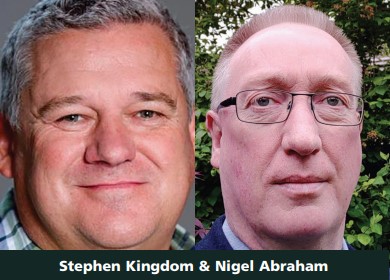
 Stephen Kingdom, CTO Xantaro and Nigel Abraham, CTO Nokia UK&I discussed how alnets have progressed from proof of concept to full scale rollouts, competing strongly with their peers in on the continent to drive one of Europe’s most dynamic fibre markets.
Stephen Kingdom, CTO Xantaro and Nigel Abraham, CTO Nokia UK&I discussed how alnets have progressed from proof of concept to full scale rollouts, competing strongly with their peers in on the continent to drive one of Europe’s most dynamic fibre markets.
They cited the FTTH Council’s latest Market Panorama Report, which revealed that 4.7 million homes were passed by UK altnets between Sept 2022 and Sept 2023, a near 38% growth. This has seen the UK altnet market’s collective footprint pass near 12.9 million premises, surpassing that of Openreach.
As these networks hit maturity, Private Equity backers are demanding a return on their investments, pivoting a new focus on homes connected instead of homes passed. This means scaling at pace and onboarding customers, whilst competing with the service levels and innovations of well-funded and well[1]established tier-one brands.
“The evolving needs of altnet businesses requires an evolution to a more resilient network model,” said Kingdom, “Facilitating this is one of the key ways in which we are helping to drive the industry forward.”
He notes that during the ‘rise of the altnet’, investor packs recommended simple network builds to help lift many of these companies off the ground. However, backhaul requirements are beginning to grow, network functionalities need centralising and technologies like XGS-PON are being more widely adopted.
According to Kingdom, navigating these growing technological complexities remains paramount for altnets to achieve their objectives. He stated: “Many complex technology obstacles must be overcome by altnets to achieve their network & business aspirations. However, many altnets don’t know where to turn to overcome these external challenges or how to establish the robust infrastructure required to meet their rollout or connection plans.”
The issue is exacerbated by the industry’s skills shortage. Abraham points out that the 150 operators are fighting for the same resources and skillset. He said: “Lots of network architects are coming from the enterprise LAN and WAN space and are now in charge of building resilient carrier-grade networks. This is a big learning curve, so a trusted and experienced advisor is critical.”
Choosing the right partners
To punch above their weight on technical roadmaps, altnet’s need to leverage vendors and partners who can provide a long-term roadmap for development.
“As altnets we need a crystal-clear architectural vision that gives you long term capabilities to compete with tier ones and do so in a scalable way to grow bandwidth and resilience as the traffic grows,” stated webinar guest speaker Paul Wier, CTIO at G.Network.
Kingdom explains the approach Xantaro takes with customers, prioritising partnership over acting as just a seller. Xantaro works closely with vendors to ensure it acts as a bridge for operators and suppliers, as opposed to limiting access.
“Trust and understanding are the two most valuable traits of a successful relationship,” he said. “The term altnet covers a lot of different business cases, so it is important to understand the customer inside out to sell them the right product. By understanding their foundations and aims we can help them evolve and grow out their architecture.”
Abraham highlighted the 7-10 different approaches taken by altnets to build maturity, that either need evolving or converting. “It is about supporting operators through whatever ‘what if’ situation that might arise,” he said.
“For this, interoperability is key, and this is a feature both Nokia and Xantaro have been innovating on and advocating for.” For example, Nokia have been working at both card and component level on technology that can facilitate both G-PON and XGS-PON technology.
XT3 Lab
To supplement the lack of R&D funding available to altnets, Xantaro has built a test lab facility, the XT3 lab, in Frankfurt. Everything sold by the vendor is modelled in this environment and customer can use it in multiple ways; modelling architecture, modelling faults in their networks and trying new services on an offline network.
“You don’t want to do anything to your network that may disrupt service to your customer, especially at a time these companies are creating a name for their brand,” said Kingdom. Xantaro has also built some mini labs on flight cases in partnership with Nokia across the UK.
These are proving particularly useful in light of Project Gigabit contract requirements, which require assurance that networks are future-proofed.
Kingdom finished: “Altnets want very good partnerships with a key group of vendors and don’t want complexities and interoperability issues. It is better to have a small number of key partnerships so you can be very agile in a very busy marketplace.”
Wier corroborated this stating: “A very high levels of trust is what I rely on with Nokia and Xantaro, a deep understanding of altnet perspective is incredibly useful.” Architectural strategies for growth Xantaro and Nokia are leveraging their deep industry understanding to help altnets scale-up against fierce competition, whilst maintaining brand identity and customer experience levels. Their recent joint webinar discussed transformations in the burgeoning sector and explored the importance of future-proofing networks. PROMOTION Stephen Kingdom & Nigel Abraham

